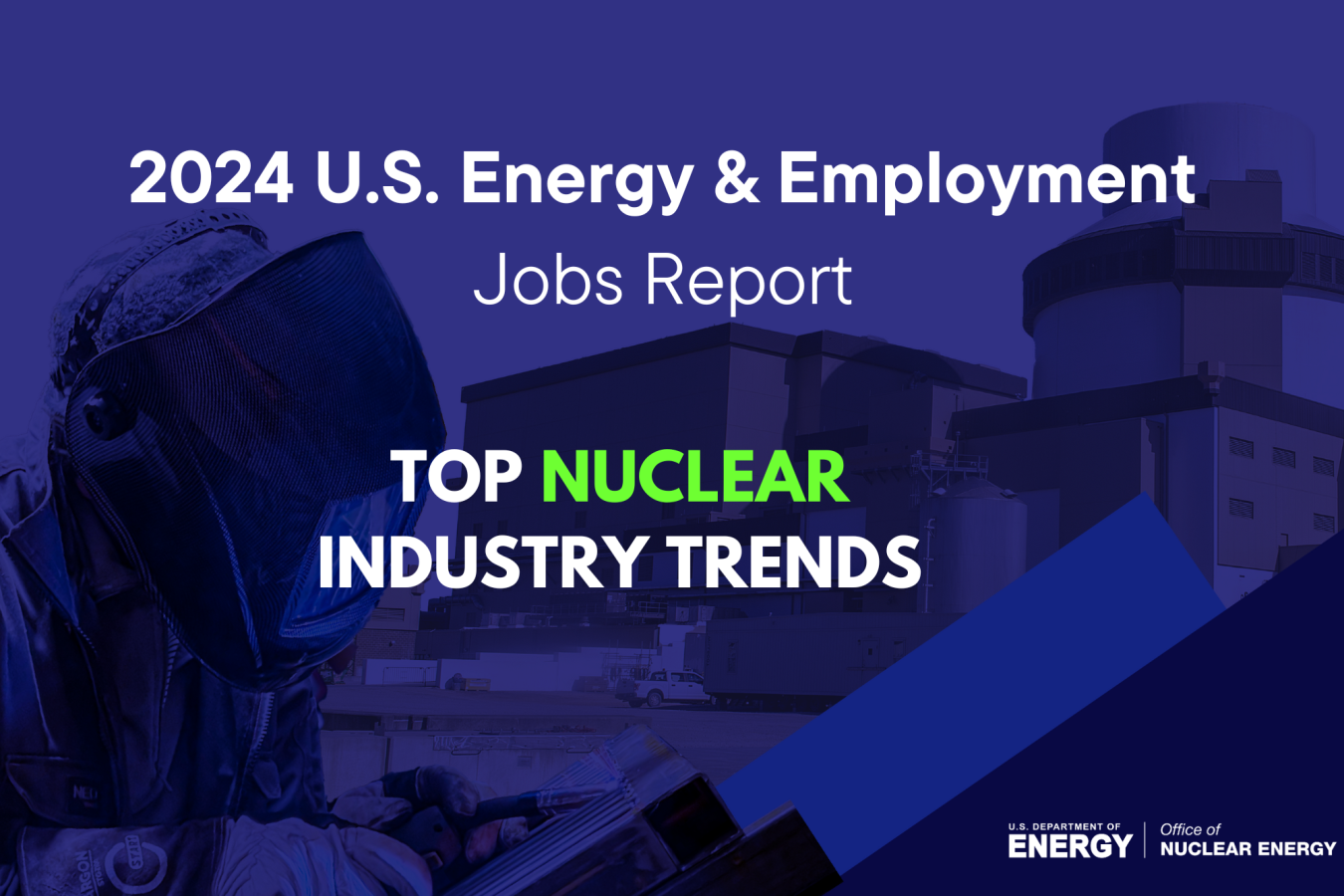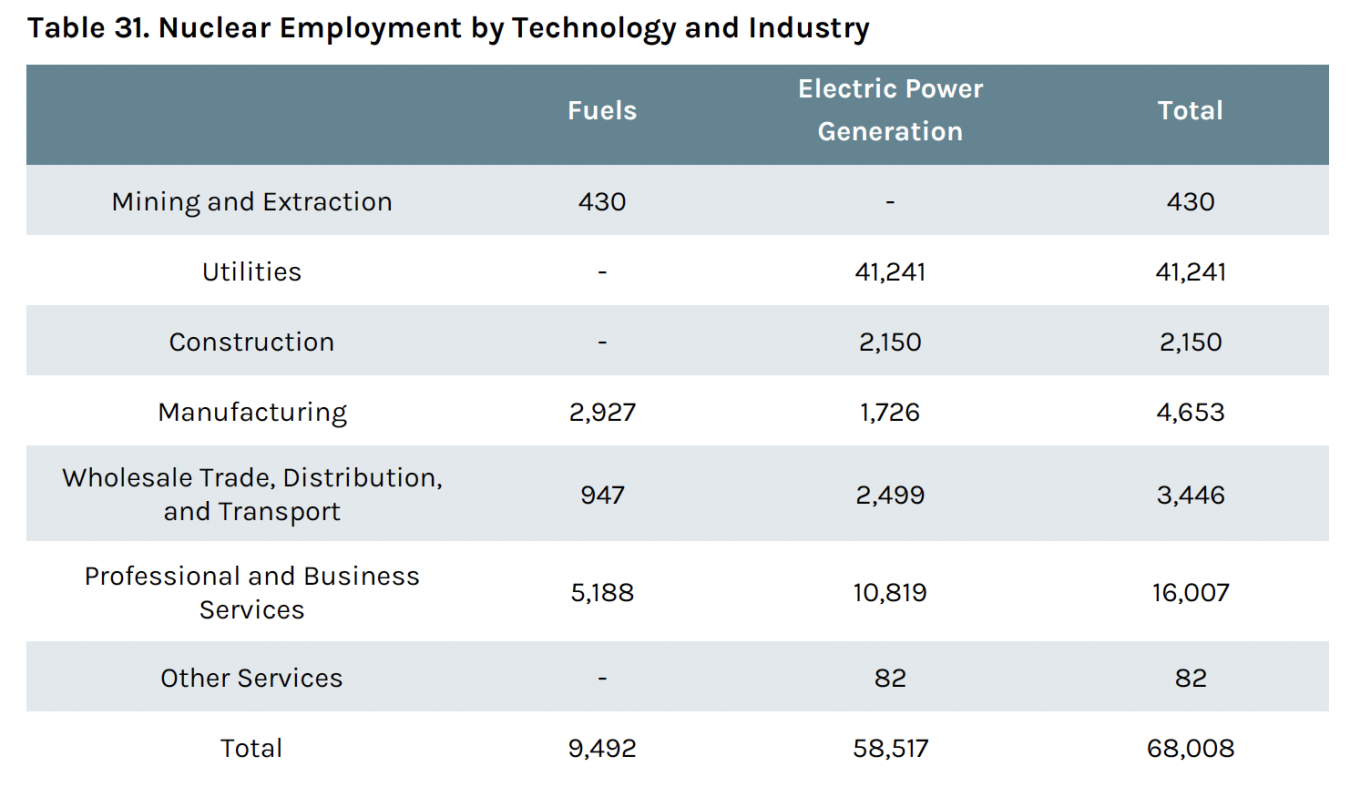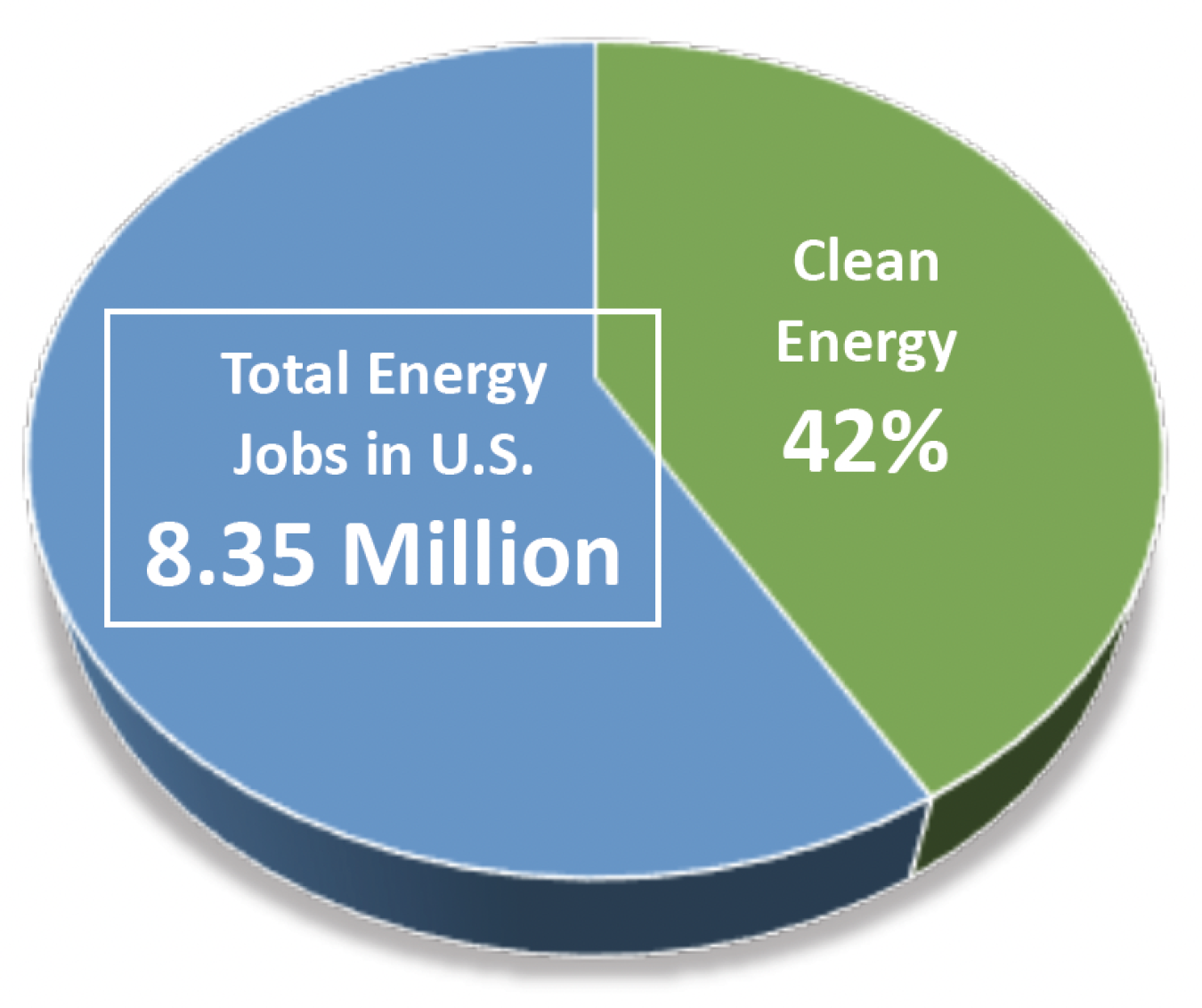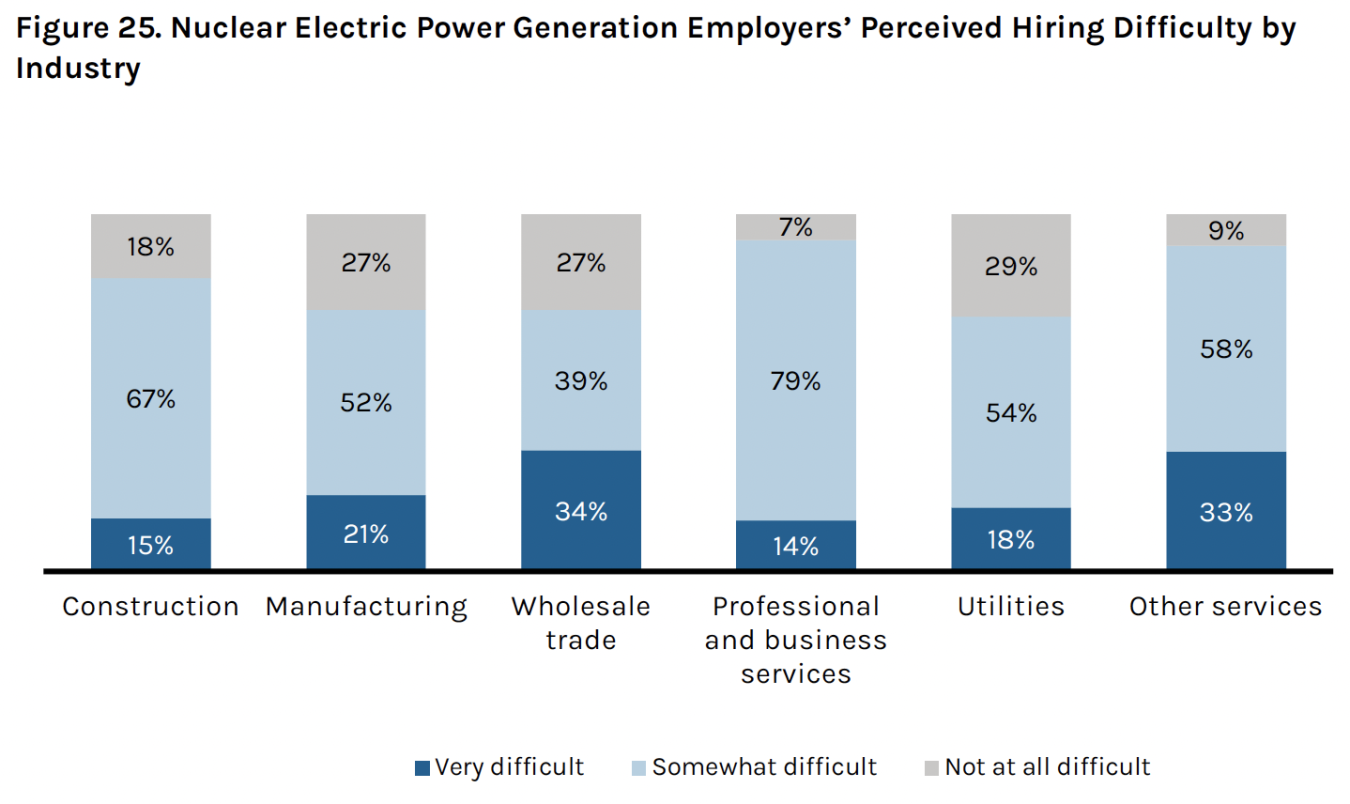Clean energy is booming, according to the 2024 U.S. Energy & Employment Report. Here are five ways nuclear energy was part of that trend in 2023.
August 28, 2024
Clean energy is booming, according to a new report on the energy workforce released by the U.S. Department of Energy.
The 2024 U.S. Energy & Employment Report (USEER) found that the clean energy sector added 142,000 jobs last year and accounted for nearly 6% of all new jobs created in the U.S. economy.
Nuclear energy was part of that trend.
The nuclear industry saw steady growth in 2023, along with changing demographics and a strong union presence that is projected to grow as the nation works to triple its nuclear capacity by 2050.
Read on to dive into five key takeaways from the report.
1. Nuclear energy industry employment is growing.
The nuclear sector employed 68,008 workers in 2023 across fuels and electric power generation, an increase of more than 1,800 jobs from the previous year. Eighty-six percent of those jobs were in electric power generation.
Jobs increased across five industries. Professional and business services accounted for two-thirds of all workers who entered the nuclear field last year. Utilities remained the largest employer in nuclear energy with 41,000 workers.
The USEER reported that the nuclear utilities workforce actually grew 1.6% in 2023 despite the industry predicting declines. Wholesale trade saw a slight drop in employment that underperformed industry expectations.

2. Nuclear energy is diverse.
The nuclear sector is highly diverse.
Women and non-white workers made up a significant portion of the workforce. Roughly 34% of workers in the field identified as female, compared to 26% of the overall energy workforce.
That’s higher than any other clean energy source.
One in three workers were non-white, which is significantly above the national average. The nuclear industry had relatively high representation of Asian, American Indian or other Alaska Native, and Black or African American workers.
However, Hispanic or Latino workers (15%) were less represented in the nuclear workforce than in the overall energy and national workforce.

3. The nuclear energy workforce is aging.
Nuclear energy’s workforce is trending older than other energy sources.
The report found that 60% of the workers were ages 30 to 54 — higher than both the wider energy workforce and national average.
Nuclear energy also had 23% fewer workers under the age of 30 than the overall energy workforce. That’s a shift from last year’s report, when the proportion of younger employees in nuclear was on par with other sectors.
The gap between early-career and late-career employment stats means that a significant chunk of the nuclear workforce is likely to retire over the next decade, creating plentiful job opportunities for younger workers who possess the necessary skills and training.
4. Nuclear energy employers need more qualified workers.
Employers also reported difficulty hiring workers across every industry in the nuclear energy sector — a trend that mirrored the larger energy workforce.
Roughly 90% of professional and business services employers said they experienced at least some challenges finding qualified workers, despite leading the nuclear field in new hires. Even utilities, which employed 3 in 5 nuclear energy workers in 2023, reported hiring challenges.
A pipeline of young talent will be essential as the U.S. nuclear industry seeks to commercialize and deploy next-generation advanced reactors in the coming decades.
Many of these jobs will not require a 4-year advanced STEM degree.
The FY24 spending bill directed $100 million to help identify, develop, and implement new safety training programs at universities, trade schools, and 2- year colleges to address the growing need for a diverse workforce.

5. Nuclear is more unionized than any other energy source.
The numbers don’t lie — nuclear energy jobs are good jobs. According to the USEER, 19% of nuclear energy workers were represented by a union or covered under a project labor or collective bargaining agreement in 2023.
That’s higher than any other single energy source, and more than double the national private sector average.
So nuclear energy workers are more likely to be well-paid — 50% higher on average than those of other electricity generation sources — treated fairly in the workplace, safe on the job site, and secure in their careers.
Read the full report for more insights into the U.S. energy workforce.

